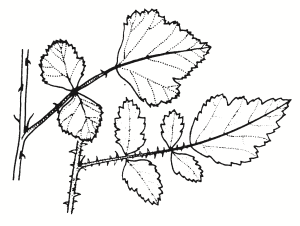Family:
Rosaceae
Rubus parvifolius
Native Raspberry
Other Names: Small-leaved Bramble, Native Bramble
First Nations Name(s):

Regional Subspecies:
Similar Species:
Often confused with blackberry (Rubus fruticosus aggregate).
Occurrence:
Regional:
Predominantly east of the Hume Highway in higher rainfall areas.
Habit:
Scrambling perennial prickly shrub with stems to about 1 m long.
Site Preference:
Prefers moist well-drained soil and semi-shade. Very hardy and drought tolerant.
Flowering:
Red or pink flowers, spring to summer.
Seed Collection:
Red raspberry-like fruit, mid Dec to mid Feb. Mature fruits shed in 3-14 days.
Propagation:
From fresh seed, semi-hardwood cuttings in summer, or root suckers.
VALUES:
Land Protection:
Native raspberry is not invasive and is not a weed threat.
Wildlife:
Excellent habitat. Berries are food for native birds and plants are valuable cover for bandicoots.
First Nations:
Berries were eaten.
Ornamental:
Attractive groundcover for rocks and walls, and can be trained as a climber.
Other:
Berries are sweet and edible, and were gathered by colonists for jams and pies. Leaves can make an astringent tea to treat diarrhoea.
